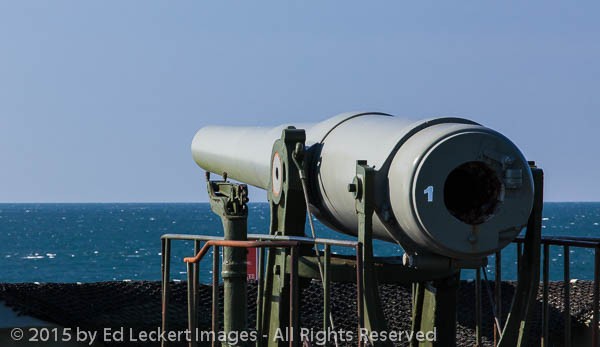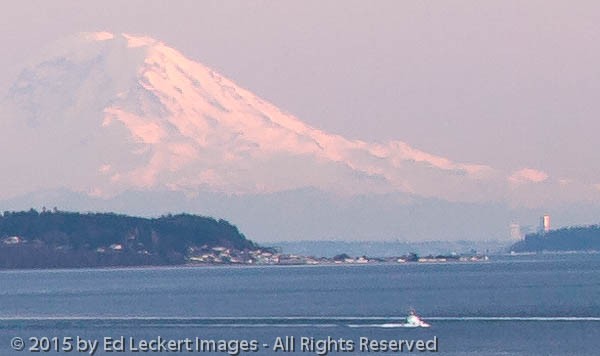


Humans like to collect things. It seems to be in our nature. When I was a kid I collected Matchbox® cars, and I think I still have them somewhere, but these days I collect something that takes up very little space. I collect stamps.
No, not postage stamps. My mom gave me a stamp collecting book when I was young, but that idea never stuck, so to speak. No, a few years back I noticed that the National Park Service had a program whereby one could buy a small booklet called a Passport® To Your National Parks, and then get this passport stamped when visiting National Park locations around the country. I thought, why not? It’ll cost me nine bucks, and I’ll have a record of all the cool places I visit. It might even inspire me to get out there and visit more places than I normally would. And that is exactly what has happened.
The passport is an attractive spiral bound book with a cover that is similar in color and style to the actual U.S. Government passport, which by the way, I have a nice collection of stamps in as well. The National Parks passport is divided into nine geographic travel regions:
On the way home from my recent trip to Yellowstone National Park, which is in the Rocky Mountain Region, I stopped at the Craters of the Moon National Monument and Preserve , which is back in my home Pacific Northwest & Alaska Region. As I was stamping my passport at the front desk, the cute, young, female park ranger asked me if I had now been to every location in the region. I looked at my small collection of stamps (nine stamps from just five locations – some locations have multiple stamps), then back at the list of 36 locations in the region, and thought, wow, I’ve barely even started, and this is my home region. I need to get busy!
So I know what you’re thinking. “I’m no expert, and I know the Pacific Northwest is pretty, but there cannot possibly be 36 national parks in just one of the nine regions!” And you would be correct. But the National Park Service watches over not only national parks, but what the passport calls national park areas, national park sites, or simply parks, including:
Whew! I’ll bet you had no idea! And I sincerely hope you just skimmed over that list. Actually, I didn’t think it would be this long when I started. Sometimes I get the impression the Park Service feels sorry for some of the smaller, less impressive sites, so they invent a new type of site just for that location to make them feel better! In fact, while I have listed them as plural, some of these site types have only one member. Which brings us to the point of this story.
Next we’re going to define in detail what each of these classifications means. Just kidding! I doubt the Park Service knows – I think they just make them up as they go along.
No, the point of the story is that I was feeling somewhat inadequate after that cute park ranger questioned me about my level of experience in my home region, and so I decided to go out that week and do something about it. But where?
Well, you see that last entry in the list of types of sites? It seems that, after consulting the map in my passport, the closest site to me was the only one of its type in the National Park system, the Ebey’s Landing National Historical Reserve. I had been to the area before on a photo shoot, but had no idea that it was a National Historical Reserve. I need that stamp! Road trip!
So Ebey’s Landing NHR is not just different in name, it really is unique within the National Park system. It is a non-traditional site based on partnerships between the National Park Service and a list of other groups including private landowners. The park boundary includes three Washington State parks: Fort Casey, Fort Ebey and Ebey’s Landing. It also includes the Town of Coupeville and parts of Island County.
So why did the Park Service essentially put a wrapper around this hodgepodge of private, county, city, and state land? According to the Park Service, it “…preserves the historical, agricultural and cultural traditions of Ebey’s Landing – both native and Euro-American – while offering spectacular opportunities for recreation.” This area, it seems, lured some of the earliest pioneers to the rich farmland and potential seaport it offered. So it is not only a site of historical interest, but still has some original buildings from the period, such as the Jacob Ebey Blockhouse and the Crockett Blockhouse. (A blockhouse is a really small fort consisting of a single building, important in those uncertain early days of Euro-American settlement in the 1850s.) Colonel Isaac Neff Ebey and Samuel Crockett, friends from Missouri, were some of the first permanent settlers on central Whidbey Island, filing land claims in 1851. Some farmers in the area today are still farming land claimed by their families during that time.

Who wouldn’t like a beautiful view of Mount Baker while working, at Ebey’s Landing
National Historical Reserve, Washington.
In the late 1890s, the military came along and constructed the Fort Casey Military Reservation on the bluff above Admiralty Head. It was one of three forts meant to protect the entrance to Puget Sound. Today the officers’ quarters, the gun escarpments, Admiralty Head Lighthouse and other remnants of the era still remain, including two of the famous disappearing guns still in place at the gun battery at Fort Casey State Park. (The two here were actually moved from the Philippines, but don’t tell anyone!) These guns were mounted on a disappearing carriage to allow the gun to hide from direct fire and observation by the enemy, particularly during reloading. This idea worked great until the airplane was invented, and the technology became obsolete almost as soon as it was installed. Sound familiar?

Disappearing gun #1 sits atop its disappearing carriage, pointing out to sea. The guns were moved from Fort Wint (Subic Bay, Philippines) for display at Fort Casey State Park, Washington.
So, besides viewing the outdoor museum pieces, what is there to do here? Well, there’s hiking, camping, mountain biking, boating, fishing, kayaking, bird and wildlife viewing, scuba diving, kite flying, stargazing, shopping, dining, and a very small degree of bar hopping. Oh, and don’t miss the great ice cream shop in Coupeville! The owner is a little cranky, but you’ll be fine if you don’t act like a stupid tourist. He hates that!

Mount Rainier appears in the background of the Whidbey Island coastline, at Ebey’s Landing National Historical Reserve, Washington.
So while it takes a couple of hours to get to the area from downtown Seattle, and Seattle is probably the furthest thing from your mind as you relax and switch into “island time”, the ugly truth is that city life is not that far away. See that picture above of the Whidbey Island beautiful coastline? Look in the far right corner. Yeah, over there by Mount Rainier. Don’t see it? Well, look at this next image, a tight crop of that edge of the shot. Yep, that’s downtown Seattle peering through the gap! See it now?

Mount Rainier and the city of Seattle are visible through a slit between islands, from Ebey’s Landing National Historical Reserve, Washington.
So, I got my passport stamp, and I learned a few interesting things about the history of the place. I also spent some time in the town of Coupeville, and next week we’ll take a look at this quaint little town.

Stamps on a page of the Pacific Northwest & Alaska Region section of my National Parks Passport.
So if you find yourself in Seattle and in need of some quiet island life, take the Mukilteo-Clinton ferry or drive around beautiful Deception Pass to Whidbey Island. It’s close enough, and it’s well worth the drive!
